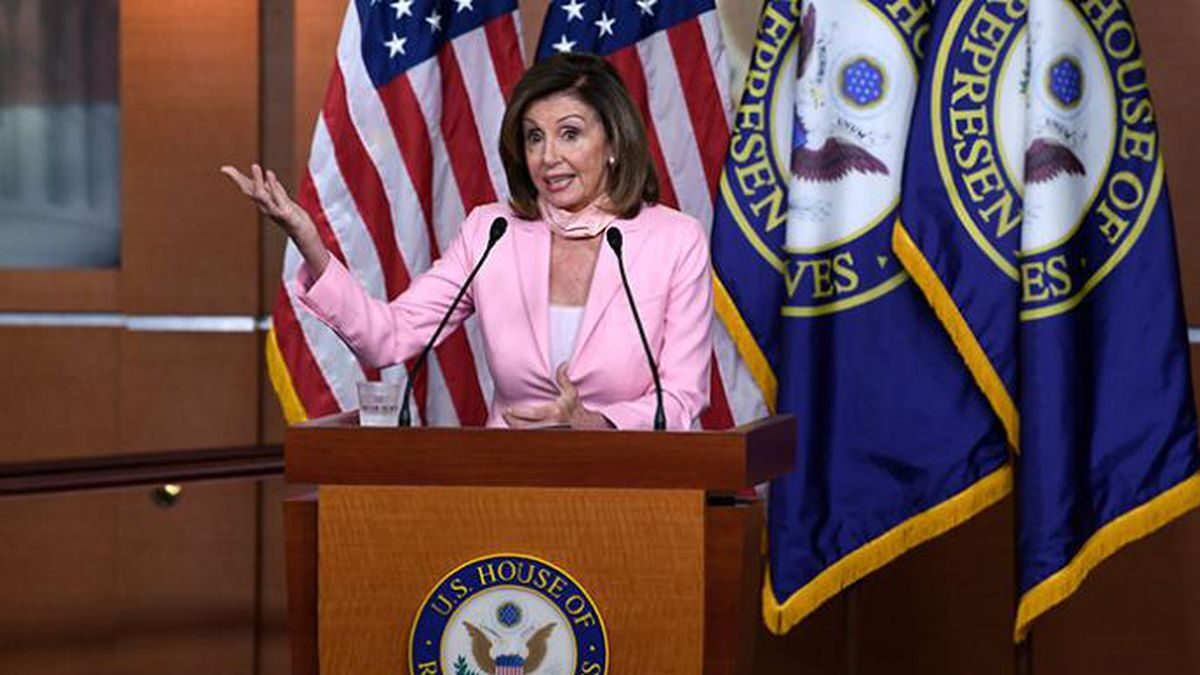
The move marks Pelosi's latest effort to take down Confederate imagery in the Capitol, following her push last week calling for the removal of 11 Confederate statues displayed in the Capitol complex.
"We didn't know about this until we were taking inventory of the statues and the curator told us that there were four paintings of Speakers in the Capitol of the United States, four Speakers who had served in the Confederacy," Pelosi told reporters in the Capitol.
In a letter to the House clerk, Pelosi requested the "immediate removal" of the portraits of four Speakers who served the Confederacy in various capacities: Robert Hunter of Virginia, Howell Cobb of Georgia, James Orr of South Carolina and Charles Crisp of Georgia.
"Our Congressional community has the sacred opportunity and obligation to make meaningful change to ensure that the halls of Congress reflect our highest ideals as Americans. Let us lead by example," Pelosi wrote in the letter to House clerk Cheryl Johnson.
Pelosi noted that the removal of the portraits comes on the eve of the Juneteenth holiday on Friday, which marks the end of slavery in the U.S. Efforts across the nation to take down Confederate imagery were sparked by the protests over police brutality and racial injustice following the death of George Floyd, an unarmed African American man who died during an arrest after a white police officer knelt on his neck for nearly nine minutes.
"Very sadly, this day comes during a moment of extraordinary national anguish, as we grieve for the hundreds of Black Americans killed by racial injustice and police brutality, including George Floyd, Breanna Taylor, Ahmaud Arbery and so many others," Pelosi wrote.
The past Speakers whose portraits will be removed at Pelosi's direction served the Confederacy in roles ranging from enlisting in the army to high-ranking leadership positions.
Hunter was the Confederate secretary of state and later a senator for the Confederacy; Cobb served as president of the Confederacy's provisional Congress; Orr served as a senator for the Confederacy; and Crisp served in the Confederate army.
Pelosi last week asked the chairman and vice chairwoman of the Joint Committee on the Library, which oversees the placement of statues, to remove the 11 statues displayed around the Capitol complex as part of the National Statuary Hall Collection.
Each of the 50 states contributes two statues to the collection, which they can replace if their legislatures and governors approve a change. All of the 11 Confederate statues that have been on display on the Capitol for decades were contributed by Southern states.
Two states, Florida and Arkansas, are currently in the process of replacing their Confederate statues with statues of civil rights activists, while Virginia's governor expressed interest earlier this year in replacing the state's Robert E. Lee statue displayed in the Capitol.
While lawmakers cannot unilaterally remove any of the statues in the collection, they do have the authority to move them to different locations. During her previous stint as Speaker, Pelosi moved the statue of Lee, the Confederate army commander, from a prominent place in Statuary Hall near the House chamber to a room below known as the Crypt.
Members of the Congressional Black Caucus introduced legislation last week that would remove all of the Confederate statues in the Capitol within 120 days.



R/C/